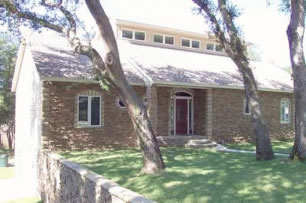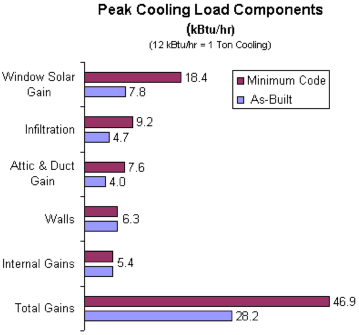| |
|
| |
| Reference
Publication:
Chandra, Subrato, Neil Moyer, Danny Parker, David Beal,
David Chasar, Eric Martin, Janet McIlvaine, Ross McCluney,
Andrew Gordon, Mike Lubliner, Mike McSorley, Ken Fonorow,
Mike Mullens, Mark McGinley, Stephanie Hutchinson, David
Hoak, and Linda Tozer. Building America Industrialized
Housing Partnership, Annual Report - Fourth Budget Period.
04/01/03-03/31/04. |
|
|
| Building
America Industrialized Housing Partnership, Annual
Report - Fourth Budget Period |
|
|
Subrato
Chandra, Neil
Moyer, Danny
Parker, David
Beal, David
Chasar, Eric
Martin, Janet
McIlvaine, Ross
McCluney, Andrew
Gordon, Mike
Lubliner, Mike McSorley, Ken
Fonorow, Mike
Mullens, Mark
McGinley, Stephanie
Hutchinson, David
Hoak, and Linda Tozer |
|
| Florida
Solar Energy Center |
|
| |
|
| 1.6
Alten Design Technical Assistance
 |
Figure
37. Hoak residence in Longwood, Florida. |
This three-story, 4,250 square foot home was completed in
February 2001 by Mr. David Hoak and Sharpless Construction
in Longwood, Florida near Orlando. (Please see Figure 37.)
FSEC assisted the owner and builder by recommending a package
of features that produced an exceptionally energy efficient
design at a reasonable cost. Because the building envelope
design and mechanical equipment selection work together as
a system, the home can be cooled with a much smaller air conditioner
than is needed by most homes of this size in this climate.
Envelope
Features:
 |
Figure 38.
Home energy components affect the size requirements
of the cooling system. |
$ High Performance Windows:
Roughly 25% of the annual cooling load in a typical Central
Florida home is introduced through the windows. Recent advances
in window technology allow this load to be greatly reduced.
The windows in this residence are particularly useful in Florida
because they have a very low Solar Heat Gain Coefficient (SHGC)
to reduce direct solar gains, and a relatively high Visible
Transmittance (VT) for natural daylighting.
Figure 38 (right) shows the impact of the window upgrade over
a typical, minimum code, single-pane clear glass installation.
The upgraded windows reduced the peak cooling load by nearly
one ton (10.6 kBTU/hour). Other improvements to the building
envelope and duct system reduced the cooling load enough that
the entire home could be cooled with a 2 ton air conditioner.
 |
Figure 39. Roof deck insulation creates semi-conditioned
space for ductwork. |
$ Unvented Attic: Most
Florida homes have vented attics with batt or blown insulation
applied just above the ceiling. This exposes the air conditioning
ductwork to very high temperatures and magnifies duct leakage
problems. Sealing the attic envelope and insulating at the
roof deck, as shown in Figure 39, provided a semi-conditioned
space for the ductwork. This reduced conductive heat gain
and minimized the detrimental impact of duct leakage.
$ Expanding Foam Insulation: A layer of expanding
foam insulation was applied to the underside of the roof deck
to create an unvented, semi-conditioned attic (R-22). The
same insulation was applied to all above-grade walls (R-11).
While the insulation R-values were standard, the foam created
a nearly airtight seal and greatly reduced outside air infiltration.
$ Continuous Air Barrier: Infiltration of Florida's
hot and humid outside air can have a big impact on energy
use, building durability, and occupant health. The continuous
air barrier, placed toward the outside of the building envelope,
reduces this infiltration. Indoor air quality concerns were
addressed by installing an energy recovery ventilator to introduce
outside air.
The air barrier consists of a tightly taped housewrap installed
over the exterior sheathing on all above-grade frame walls,
and extruded polyurethane foam boards glued to the interior
of the below-grade block walls. Expanding foam insulation
provided an extra measure of airtightness at all above-grade
exterior surfaces including the roof deck. Special care was
taken to seal wall details such as corners, floor interfaces,
and the roof junction. Blower door performance tests verified
the home's level of airtightness (ACH50 = 2.0).
|
Disclaimer:
This report was prepared as an account of work sponsored by an agency
of the United States government. Neither the United States government
nor any agency thereof, nor any of their employees, makes any
warranty, express or implied, or assumes any legal liability
or responsibility for the accuracy, completeness, or usefulness
of any information, apparatus, product, or process disclosed,
or represents that its use would not infringe privately owned
rights. Reference herein to any specific commercial product,
process, or service by trade name, trademark, manufacturer,
or otherwise does not necessarily constitute or imply its endorsement,
recommendation, or favoring by the United States government
or any agency thereof. The views and opinions of authors expressed
herein do not necessarily state or reflect those of the United
States government or any agency thereof.
|






